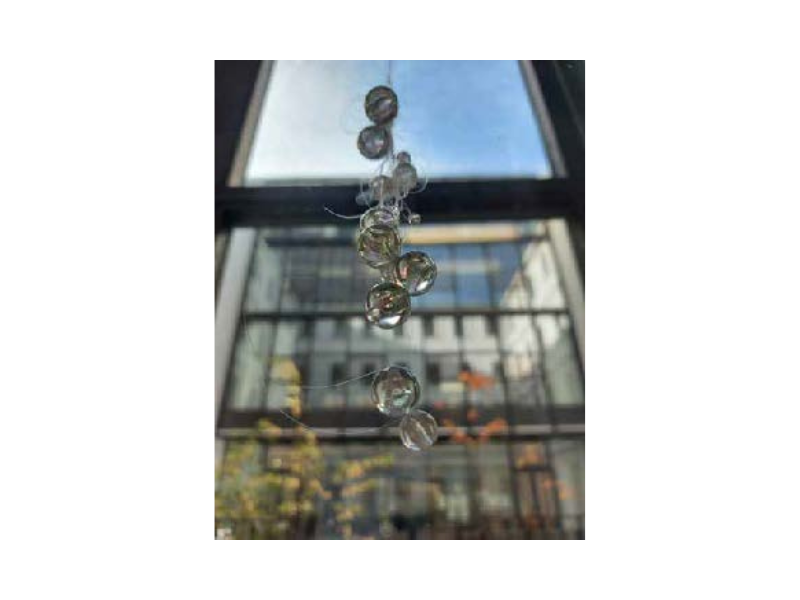
It is between 14 and 18 units in size and consists of three parts. The smallest part, the uppermost, consists of two large and three small round organs, two rod-shaped organs, one tubular organ and an opening. Two pairs of wings grow from the middle part – the front wing is significantly larger than the rear one – and six legs. The last part is the largest, it is two-colored and striped. Draw a picture of what is described might look like.



Each student should create a picture of what is described might look like. It is important that all of the elements mentioned occur. They should also think about the proportions. The picture/sketch should be colored – at least two different colors! There will be a front and a back that will be filled at the end. The students have to consider whether they should design both sides the same (divide details or whether one side should remain “blank” and the other side is the display side).
During the work on the drone collection site, a landscape definition was developed that can not only be used for bees, but can also be used to describe various contexts in which individuals meet – a definition with which a collection area can be understood as a landscape:
On November 20th and on December 18th as a part of the RfN, landscapes have been formed around the drone collection point W8F2VZA7 – students, teachers, interested
parties and others came together around the Flux-Terrace between 4 p.m. and 9 p.m. for teaching and exchange. During guided tours, the artistic projects in the windows were described and discussed.
In this project, students learn to translate their understanding of the text into design. This is also important for other subjects such as languages or mathematics – what do I read and how do I understand it? And what does it mean? But in general, this ability is important in any type of communication. The students recognize and experience that the same task can have different solutions and lead to different results. The students learn how to translate a two-dimensional drawing into a three-dimensional object and how to use a needle and thread.
The students‘ drawings vary in scale and color. Some students have problems understanding the text – for example, they don‘t understand the term organ. As a result, the writing was only partially translated into a drawing. Hints are often necessary that prompt individual passages of text to be read again. Implementing it in a felt trailer that the students can take with them after completing the project increases their motivation to work. During the working progress I realized that I won ́t be able to knot as many beads as I thought I would and could in the beginning of the project. Aside from that I got confronted with many considerations I did not think of before: Do I like the bunches that arise because of the way I work or am I going to change or adjust my way of working? How will the installation be fixed in the window?
The encoded description of a drone is an example of the visualization of a text. This teaching concept can be adapted as desired; a wide variety of topics can be worked on using this method.

